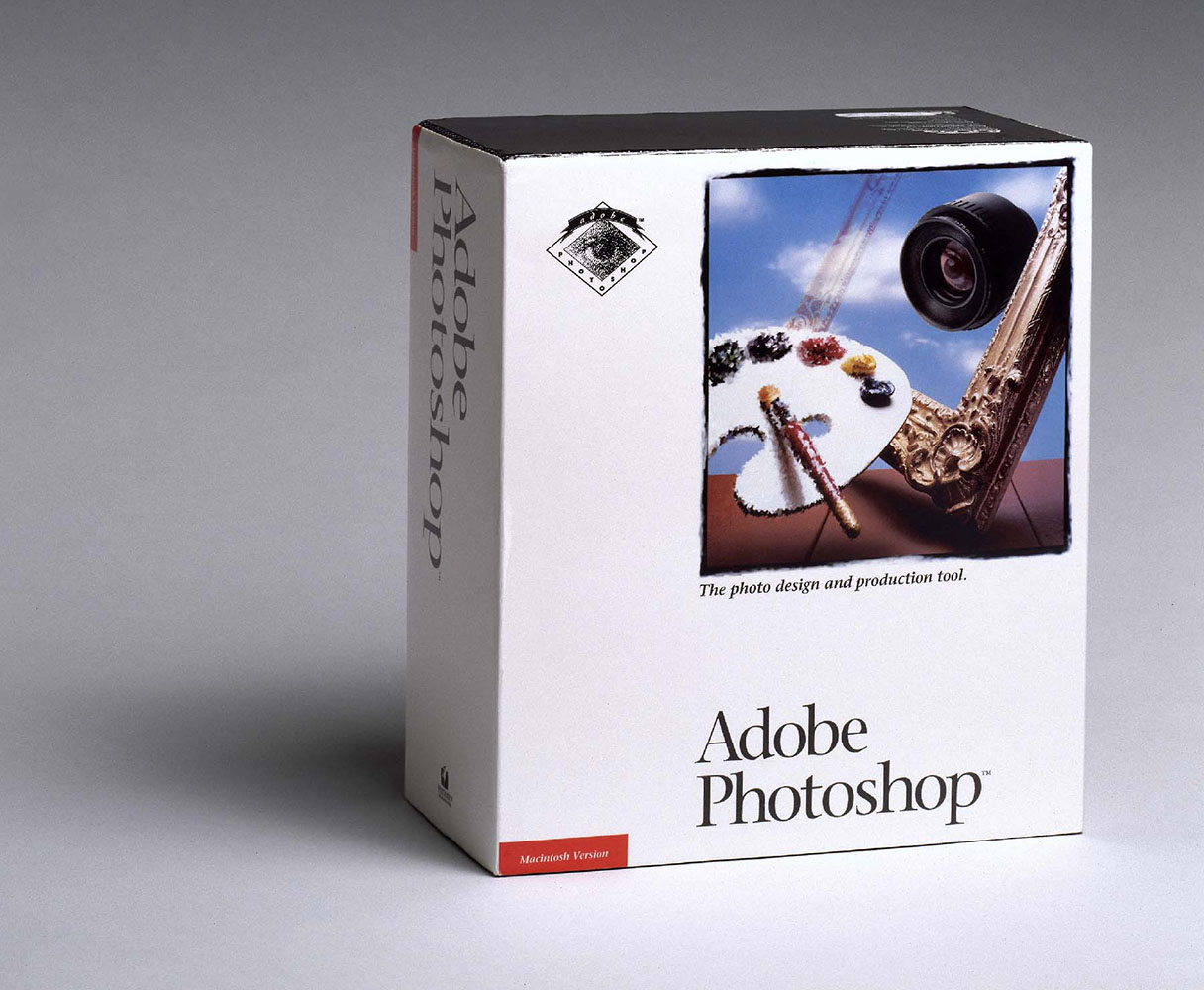Photoshop at 25: The changing face of digital imaging

Adobe is celebrating a big milestone for its landmark image editing software Photoshop. The venerable software package's 25th anniversary this week. Few apps have had Photoshop's industry-changing impact and popularity, and fewer still are as directly linked to the Macintosh's enduring success as a tool for creative professionals.
Humble beginnings
While Adobe celebrates Photoshop's 25th anniversary today, Photoshop can trace its lineage back to 1987, when Photoshop's creator, Thomas Knoll, first wrote code to display grayscale images on his black and white Macintosh Plus.
Knoll, a PhD student at the University of Michigan, showed the app to his brother John, who worked at Industrial Light & Magic, the movie visual effects company started by Star Wars creator George Lucas. The two brothers collaborated on the development of image editing features that would ultimately become the core of Photoshop, the earliest shipping version of which was bundled with a photographic slide scanner.
Knoll pitched the software to dozens of app publishers. Russell Brown, Adobe's art director, saw not only what the software could do, but what it could be. Adobe purchased a license to distribute the software, and would release Photoshop 1.0 for the Mac exclusively, in February, 1990.

The desktop publishing world would never be the same.
True industry disruption
The term "disruption" gets abused about by PR and marketing teams these days, but that's truly the effect that Photoshop had on the desktop publishing market.
Before Photoshop, digital image retouching was an incredibly expensive endeavor: Dedicated high-end computer systems were needed to manage this feat. Businesses paid hundreds of dollars an hour for the privilege. After Photoshop, anyone with a color Macintosh and a scanner could produce incredible images for a fraction of the price.
Master your iPhone in minutes
iMore offers spot-on advice and guidance from our team of experts, with decades of Apple device experience to lean on. Learn more with iMore!
Six years before Photoshop, the Mac came on the scene at a time when printing and typography were expensive and rarified professional markets, open only those with years of training and machines that cost hundreds of thousands of dollars or more.
Within less than half a decade, the Mac completely remapped that industry. Almost anyone working in graphic design and publishing could afford their own professional rig. The graphic design and publishing market exploded as a result: Designers old and new were able to work with digital imagery and precise layout technology at a fraction of the price they could before.
Adobe's work on Illustrator and font management had already helped to secure the Macintosh's place as the centerpiece of desktop publishing. Quark established QuarkXPress as as the premier page layout tool of the age. Adobe would eventually unseat Quark with InDesign, but at the time, Photoshop was the fourth pillar. Combined, the world of graphic design, page layout, typography, image editing and printing would never be the same.
Photoshop's enduring legacy
Photoshop, and the industry of image editing tools and techniques that have developed in its wake, has had an incredible impact not just on the way we edit images, but the way we perceive images too. Photoshop has also become so seamlessly enmeshed in our lives that we look skeptically at almost every image we're shown: Is it real, or is it Photoshopped?
Barely a magazine exists whose cover photo hasn't been airbrushed and retouched extensively with Photoshop. Photoshop isn't just used to as a creative or artistic tool that improves lighting and adds special effects: The abuse of Photoshop and other image editors by the media propagates harmful messages that affect women and girls' body image and self esteem.
"95 percent of the human images we see are retouched," said Jennifer Berger, Executive Director of the nonprofit organization About-Face. Berger is an expert in how media shapes our sense of self.
"The problems with Photoshop happen when it's used to remove more than small blemishes, and instead waved over an image to remove wrinkles, bulges or enlarge breasts, lengthen necks, or other such body modification."
We've even seen image editing software used for government propaganda too.
But the bottom line is that any tool can be used for good or ill. Photoshop is no exception.
Photoshop, and the work it does, has become such a routine part of life that it's become a generic verb in English and other languages to describe image retouching. Photoshop is part of our daily lexicon like "Xerox" is for photocopying, "Hoover" for vacuuming, "Kleenex" for facial tissue and, arguably, "iPad" for computing tablet.
Photoshop's future

Adobe's relationship with Photoshop users changed in 2013, when the company announced it was discontinuing development of Creative Suite in favor of Creative Cloud, its cloud-based subscription service.
Customers no longer wait years for monolithic updates that cause major workflow disruptions. In exchange for a monthly fee, users get more frequent, incremental updates and feature changes.
Those who prefer paying once for software and forgetting about it have been left by the wayside, or in search of alternatives. And the good news is that there are alternatives. Photoshop isn't the only image editing software out there, and never has been. Photoshop is an icon, however, and a sounding beacon for an entire industry of software applications.
Since Thomas Knoll's work on a black and white Mac Plus in the 1980s, Photoshop has had a secure place in the pantheon of digital image editing software. It's a legacy Adobe is sure to protect far into the future.
Here's Adobe with the final word:

